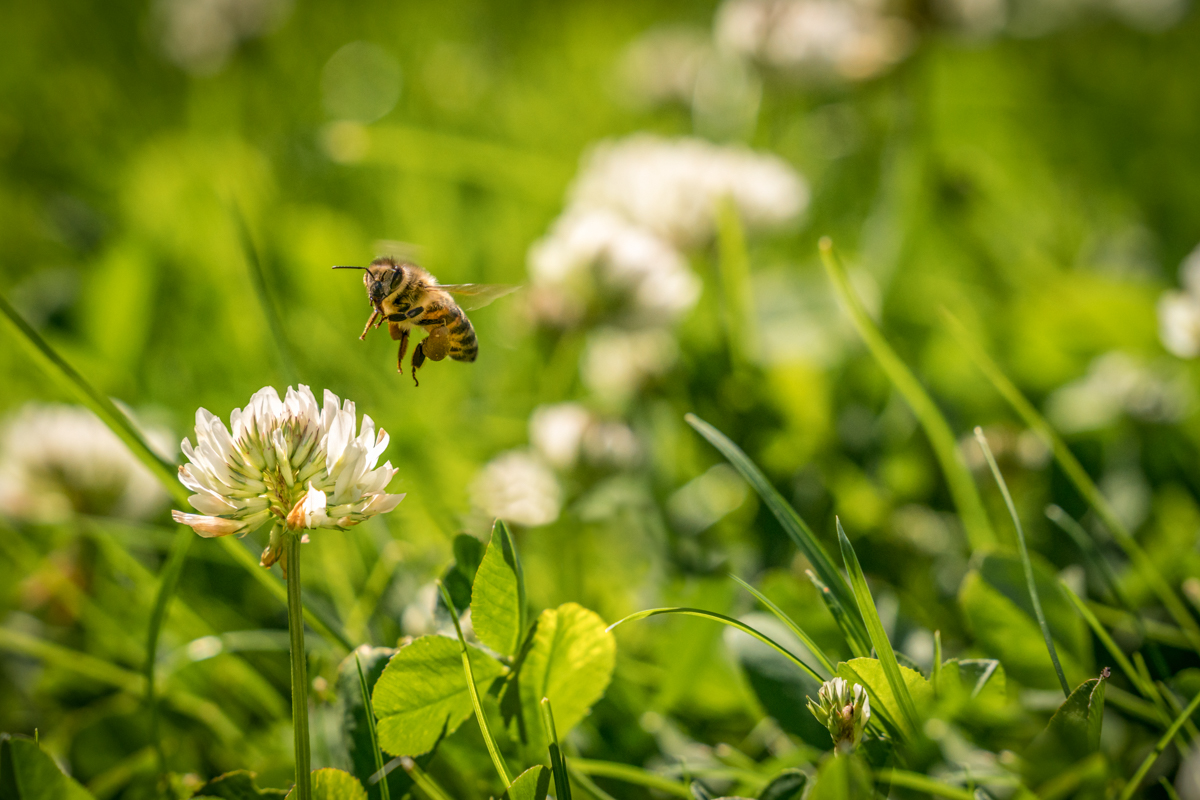The first inspection after winter break is always angst-inducing, because how many of your colonies made it through the break, alive? Nevermind that I live in Southern California and we don’t have a “real winter” here – I’m not opening up my bees in December or January if I can help it. It’s too chilly, windy, and frankly, WET.
And they deserve a break from me.

My apiary, L to R: Venice, Catalina, Huntington Gate, Brian Park.
Springtime photos always look so beautiful, so GREEN. Fall photos (or even late summer) make it look like I keep my bees on the surface of Dune (or Arrakis – whatever, nerds).
First you’re going to visually observe the colonies from the outside, and you’d better see bees going in and out or else something is amiss. Notice below that I actually have a “fifth” colony but it’s not a normal colony at all… I call it the Wesley Palms retirement home, and it’s where I put some feral queens I didn’t want to kill when I requeened them (not altogether, though! That would’ve been like the world’s tiniest Roman Colosseum):
Now I know what you’re thinking: why requeen if you’re keeping the old queen with mean genetics? And usually you’d be right, but when you put the old queen into an apartment in a queen castle (big enough for only two frames: one honey and one brood), the colony never gets big enough to get mean OR swarm. Clearly it worked for at least this one queen/colony still kicking it live through winter.
What’s a feral/unmarked queen look like? She looks like any other queen, but without the paint mark from her breeder because she bred the old fashioned way. She is longer than her daughters with a big, bald back and usually a slight color variation when compared to worker bees. She also has longer legs (for constant dipping down into cells, laying eggs) and her legs tend to be red or blonde instead of black:

Once you see that your colonies are alive, start by opening an exterior hive and work in order from there. Make sure you smoke the outside before you even crack the top; the smoke reduces any alarm pheromones and distracts the guard bees. I started here with Venice:
You’re looking for bees COVERING the frames, preferably a queen, but if no queen then at least eggs all the way up through brood. Don’t know what eggs look like? They look like the tiniest grain of rice; larvae are the hatched babies that look like fat white grubs; and the capped cells contain pupae – that’s where all the magic of metamorphosis is happening! See photo below for eggs on the left, larvae toward the center, and capped brood or pupae to the right:

Happy to see good stores, brood, and my purchased Queen Luna in Venice I moved on to Catalina. I was happy to find all the same there, too:
Before opening my third colony, I noticed a sticky webbing just under the lid of Huntington Gate: a widow spider, to be sure. I actually find it’s almost always a black widow or a false widow, but neither is a big problem (they don’t eat that many bees) and because they are so timid, I always relocate them to a nearby tree:
Once that was done, I moved on to inspect Huntington Gate. This colony was originally a swarm capture from my friend’s barbeque but I requeened them so they’re all 100% descendants of Queen Chantal, purchased from Wildflower Meadows. Yes, these queens are bred for good temperament and to be mite-resistant (you still need to treat for mites), but they are local, so they might have a hot temperament.
Okay I’ll stop beating around the bush: they got PISSED. I did scrape one of their honey frames a smidge (no one was injured!) because they had so many stores it was bulging, but that alone isn’t reason to get this mad. I think they were ready for more space, so I ran up to the garage a found a honey super (box with more frames) to throw on.
Adding a super is like giving them an instant upper level addition to their house, but without the time, expense, and hassle of contractors (unless the bees consider me to be some giant annoying contractor, which is probably the most accurate thing I’ve said here in this post).
Current queen count: three out of four, confirmed (for now… they’ll try to swarm this spring and I’ll try to stop them and fail). Clockwise from top left: Queen Luna, Queen Catalina, and Queen Chantal:

Finally I moved on to Brian Park, another swarm capture I made from another friend’s front yard and also requeened, but this one was TOUGH to requeen – they kept making their own queens and killed my purchased one (RIP Queen Noor I) and on this day I can’t say with certainty that Queen Noor II is still ruling this colony because I didn’t set eyes on her. What I did notice is that there clearly IS a queen based on crazy brood and stores, and they also need another super, which I will throw on next time. This is Brian Park:
On your first post-winter inspection you’ll also want to make sure the hive bodies are in good order, which is to say that weeds are trimmed so ants can’t climb up. I also use hive stands with metal cups at the bottom (circled in the image below) to put oil inside (always covered by a lid so bees don’t drown) – it prevents ants from availing themselves of your bees’ honey:

Have questions? Drop them. Hope you enjoyed these cute little monsters, and remember, everything looks peaceful when you render it in slow motion:
Thanks for looking, and happy inspecting! xoxo 🙂






